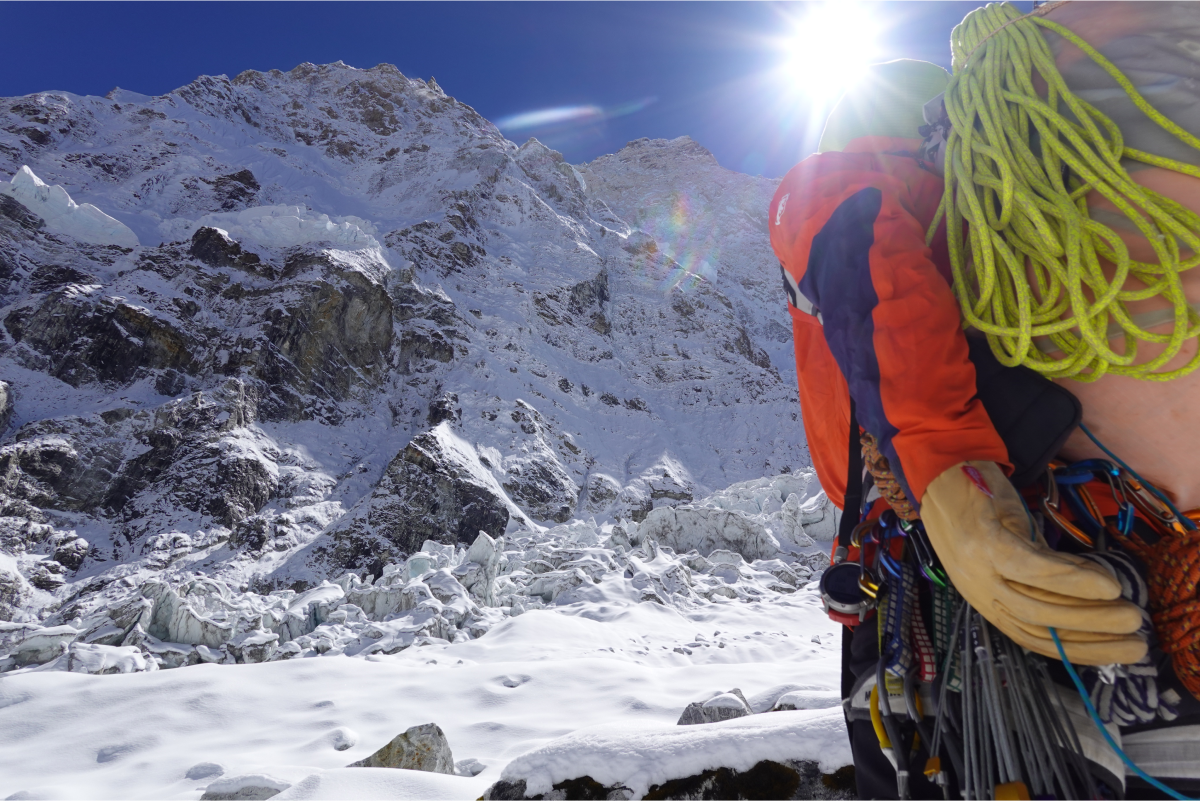On October 12th, 2023, Matt Cornell, Alan Rousseau, and Jackson Marvell stood together on the summit of Jannu in the Himalayas. This is the story of their journey to establish a new route of the North face.
Below is a breakdown of their remarkable achievement showing what it takes to climb at high altitude.
Watch Used: COROS VERTIX 2
Data Analyzed By: COROS Coaches
What Is Jannu?
Jannu, or Mount Kumbhakarna, is a 7,710m peak in Eastern Nepal. While the mountain features numerous challenging routes, the steep North Face (so-called "Wall of Shadows") is the one that caught Matt's attention a few years ago. While it has been climbed before, climbers would usually circle around to avoid the headwall higher up, the most difficult part of the route. However, Matt and his team would attempt to climb the entire North Face, therefore establishing a new route on the higher end of the mountain.
Below you will find some features of the route taken by the team on Jannu:
| Team | Matt Cornell, Alan Rousseau, Jackson Marvell |
| Route | North Face of Jannu, Nepal |
| Route Grading | M7 A15 A0 |
| Climbing Style | Alpine |
| Altitude | From 5,475m (Base Camp) to 7,710m (Summit) |
| Duration | 7 days (6 up, 1 down) |
Matt, Alan, and Jackson, are no strangers to incredible climbing feats. Together, they have completed several world-class climbs, such as the 'Slovak Direct' on Denali in under 22 hours, breaking down the previous fastest time of 60 hours.
After several years of preparation and two reconnaissance trips to the Himalayas, it was time for this iconic team to give Jannu North Face a try.

Credit: Matt/Alan/Jackson Collection.
The Calm Before The Storm
The team arrived in Katmandu a few weeks prior to the climb to ensure a proper acclimatization process both from a physiological and logistical standpoint. The approach to Jannu base camp takes roughly 10 days through gorgeous Himalayan scenery. While they embarked on a serious mission in the Himalayas, Matt and his team took a rather conservative approach during the weeks leading up to the climb.
We have put rest at our top priority before the climb. We have not climbed in the month prior to our expedition. A lot of climbers will try and squeeze in some last minute training days to ensure they don't lose fitness, but we have opted for rest and acclimatization.
-Matt

Credit: Matt/Alan/Jackson Collection.
COROS Education: SpO2 is a measurement of blood oxygen saturation captured manually through your COROS watch to give you an estimation of your body's ability to use oxygen. While an SpO2 reading of >90% would mean that your body is well acclimatized, a reading <80% would tell you that your body is not fully efficient yet, and additional rest is needed.
Thanks to their COROS VERTIX 2 watch, the team kept monitoring their acclimatization through SpO2 and HRV measurements on a daily basis. It allowed them to ensure their body would adapt to the high altitude before beginning the climb.
'Round Trip Ticket'
On October 7th, Matt and his team embarked on a 7-day self-supported climb up Jannu North Face. While the first two days were relatively less complex, the real climb began on day 3 where they properly emerged on the wall. "The climbing part from 7000m to 7500m was the hardest because it had never been climbed before, so we were moving through unknown terrain", explained Matt.

Credit: Matt/Alan/Jackson Collection.
Through patience and a lot of encouragement from each other, the team successfully got through the hard section despite the conditions at high altitude being extremely challenging. "We expected those conditions as we were climbing the north face. Those faces barely get 5 minutes of sun each day along with high winds and freezing temperatures", mentioned Matt.
On day 6, after a grueling battle with the mountain and continuous 12-hour days on the wall, the team finally reached its summit at 7,710m, totally exhausted but with high spirits. Matt adds: "At some point, it looked like we were climbing with a 4th partner that didn't exist!"

Credit: Matt/Alan/Jackson Collection.
Matt and his team have been able to rely on some of their COROS metrics, such as grade (%) and altitude, throughout their journey to ensure a safe climb up and down 'Round Trip Ticket', the name they give their new route on Jannu North Face.
What Their Body Experienced On Jannu?
At high altitude, the body is struggling to keep up with the intensity. Above 6000m, an athlete can only sustain roughly 50% of their maximal intensity at sea-level. For the team, this new challenge translated into higher heart rate readings during climbing sections and more frequent rest time as seen in the graph below.

HR data of Alan Rousseau on day 2 above 6000m (20,000ft).
COROS Education: The 'Time in Zones' graph within an activity page provides useful information about the intensity distribution of that specific session from a physiological (HR) standpoint.
7 days of strenuous exercise at high-altitude can definitely take a toll on the body. Their average Training Load score per day reached 563, which reflects how difficult this expedition was despite managing their effort throughout.
Back to Base Camp
Thankfully, Matt and his team got back down the mountain in a single day without any major issue. Alan and Jackson did suffer from minor frostbites and were transported back to Katmandu to begin a 5-day treatment. They are now on their way to a full recovery.
Regardless of their preparation prior to the expedition, the team lost a significant amount of weight. "We emphasized putting on weight before the climb to limit the decrease in body weight, but I think we lost roughly 10-15lbs in 7 days", told Matt.
The COROS team congratulates Matt, Alan, and Jackson for their amazing achievement in the Himalayas. We look forward to seeing what they can accomplish going forward.

Credit: Matt/Alan/Jackson Collection.

/filters:quality(90)/fit-in/970x750/coros-web-faq/upload/images/8b8fede6beae378e689f24f6da9d80f1.png)





